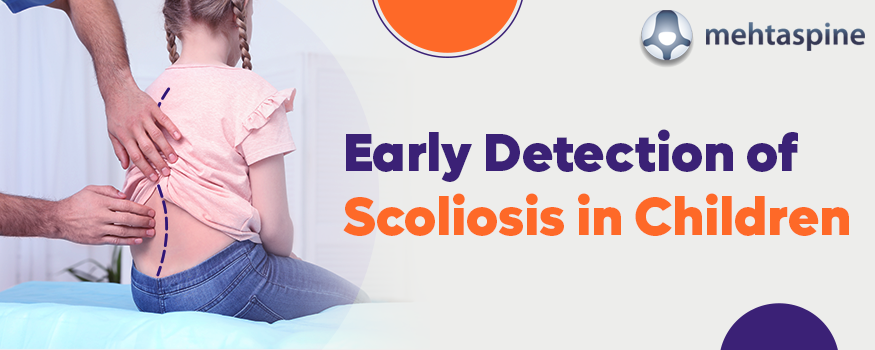The Vital Importance of Early Scoliosis Detection in Children
The awareness about scoliosis in children is continuously growing, but there are still significant gaps in detection that are now causing major spine health problems in children.
“More than 80% of children with scoliosis show no symptoms, which often leads to delayed diagnosis and spine health complications. Only 20-30% of scoliosis cases in adolescents are identified before they reach skeletal maturity when the treatment methods are most effective,” says a paediatric deformity specialist in the UK, Mr. Jwalant S. Mehta.
The majority harbour misconceptions about scoliosis in children, often leading to delayed diagnosis. “Misconceptions such as only poor posture causing scoliosis or heavy backpacks contributing to scoliosis, and scoliosis curves correcting themselves, do more harm than good, leading to delayed diagnosis and potential complications and ineffective scoliosis treatment,” continues spinal deformity specialist doctor in the UK, Mr. Jwalant S. Mehta.
With this blog today, we want to raise awareness about the vital importance of early scoliosis detection in children. But let us first start delving into the impact of delayed diagnosis:
Impact of Delayed Diagnosis of Scoliosis in Children:
While it is not intentional, delayed diagnoses can have cascading adverse effects on children and adolescents due to rapid growth spurts. Because the progression of the curves is left unchecked, the spine becomes more affected by curves, impacting posture and balance. Body image issues, anxiety, and lowered self-esteem gradually take a toll on mental health.
A limited range of motion can hinder participation in sports. More importantly, delayed diagnoses reduce the effectiveness of non-surgical treatment options and necessitate more complex and invasive treatment choices like surgery, which also increases healthcare costs.
Importance of Early Scoliosis Detection in Children:
Early detection of scoliosis is fundamental in managing the condition in children and adolescents. Scoliosis can be asymptomatic, meaning it can appear in children with no visible symptoms, making early detection through regular check-ups with paediatric deformity specialists crucial.
Children are in their best treatment phase in early childhood when it comes to treating scoliosis. The potential scoliotic curves can be corrected, and progression can be prevented with early intervention using braces and physical therapy during childhood. Addressing these mild scoliotic curves in childhood minimizes pain and discomfort, significantly improving treatment outcomes.
Early intervention and scoliosis treatment make the treatment less invasive and cost-effective, preventing potential complications and enhancing the child’s body image and self-perception.
However, due to a lack of awareness about scoliosis and sometimes even its asymptomatic nature, parents, teachers, and even healthcare workers often overlook this condition, which could be detrimental to children in the long term.
“In babies, watch out for limited leg movements, uneven thigh folds, clicking sounds, and leg length differences. As for children, be alert for limping, a waddling gait, stair-climbing difficulties, muscle development asymmetry, and leg rotation restrictions to detect early scoliosis,” says scoliosis specialist and paediatric deformity specialist in the UK, Mr. Jwalant S. Mehta. For more information on early detection of scoliosis in babies and children, you can contact him here.


